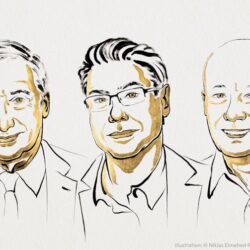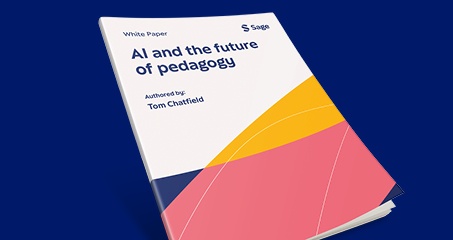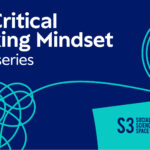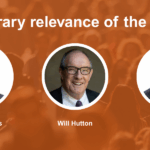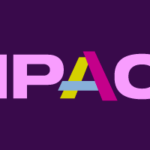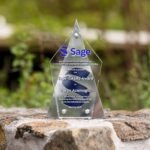What Research Made the Most Impact 10 Years Later?
SAGE Publishing Launches 10-Year Impact Awards
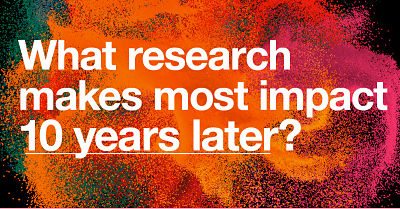
Although anything ‘pre-COVID’ may feel distant, the need for timeless research has never been stronger as the pandemic continues to uproot the world. Researchers are building on previous scholarship related to pandemics, containment behaviors, well-being in isolation, etc., and policymakers are looking to past research to quickly establish health and safety practices. And it’s possible that 10 years from now we will all turn to articles derived from this pandemic for other reasons. At SAGE Publishing (the parent of Social Science Space), we recognize the importance of research that is influential for the longer-term, which is why we are launching the 10-Year Impact Awards.
Last year at Google’s main campus, we hosted a workshop to assess how we measure the impact of social and behavioral science research. While article citations and journal impact factors are the standard, participants discussed how the latter, because of their two- or five-year window, don’t account for those papers whose influence grows over time or that are recognized at a later date. This is especially problematic for the social sciences, as impact factors “tend to underestimate” the value of social science research because of time lags and social science’s interest in new approaches, rather than solely iterative ones.
But what if we also look at papers published 10 years ago to determine – and celebrate – those that are still used today? While citations and impact factor are not everything, and we are supporting new modes of recognition that celebrate real-world impact, this deceptively simple method will help us reduce short termism.
This year, we will analyze citation data for articles published in SAGE journals in 2009 to reveal those most cited through the end of 2019. In May, we will present our inaugural 10-Year Impact Awards to the authors of the three papers with the most citations and share helpful insights we learned along the way. The authors of the winning papers will receive a small cash prize.
The 10-Year Impact Awards are a part of SAGE’s larger effort to inspire and change the conversation around research impact, especially in the social and behavioral sciences. The initiative launched with a report, The Latest Thinking About Metrics For Research Impact in the Social Sciences, based on the 2019 workshop.
Since then, SAGE has launched an annual Impact in Action Writing Contest here on Social Science Space; a quarterly newsletter that collates topics for discussion, news, and articles (sign up by emailing pr@sagepub.co.uk); and a microsite spotlighting research geared towards real-world change.
To help leaders and individuals make the best decisions on dealing with the COVID-19 outbreak, we’ve also curated a free-to-access collection of medical, social, and behavioral research related to pandemics and coronavirus. And we continue to support groups that advocate for social and behavioral science funding.
Those interested in engaging in the social and behavioral science impact debate can do so at socialsciencespace.com/impact or on social media using #SocialScienceImpact.
Interviews With Authors of the Award-Winning Papers

Popular Paper Examines Ensuring Trustworthiness in Qualitative Analysis
“Trust, but verify,” is a Russian proverb that gained prominence during the Cold War during negotiations centered on nuclear arsenals. That idea […]

Paper to Advance Debate on Dual-Process Theories Genuinely Advanced Debate
Psychologists Jonathan St. B. T. Evans and Keith E. Stanovich have a history of publishing important research papers that resonate for years.

Paper Opening Science to the New Statistics Proves Its Import a Decade Later
An article in the journal Psychological Science, “The New Statistics: Why and How” by La Trobe University’s Geoff Cumming, has proved remarkably popular in the years since and is the third-most cited paper published in a Sage journal in 2013.

A Milestone Dataset on the Road to Self-Driving Cars Proves Highly Popular
The idea of an autonomous vehicle – i.e., a self-driving car – isn’t particularly new. Leonardo da Vinci had some ideas he […]

Paper on Understanding Individual Differences In Executive Functions Proves Hugely Popular
The paper “The Nature and Organization of Individual Differences in Executive Functions: Four General Conclusions,” published in Current Directions in Psychological Science in 2012, is a recipient of Sage’s fourth annual 10-Year Impact Awards. The paper has been cited 2,172 times.

A Viral Paper on Determining What Makes Online Content Viral
The paper “What Makes Online Content Viral,” published in the Journal of Marketing Research in 2012, is a recipient of Sage’s fourth annual 10-Year Impact Awards. The paper has been cited 1,333 times.

Honoring a Prescient Look Corporate Social Responsibility
The paper “What We Know and Don’t Know About Corporate Social Responsibility: A Review and Research Agenda,” published in the Journal of Management in 2012, is a recipient of Sage’s fourth annual 10-Year Impact Awards. The paper has been cited 1,970 times.
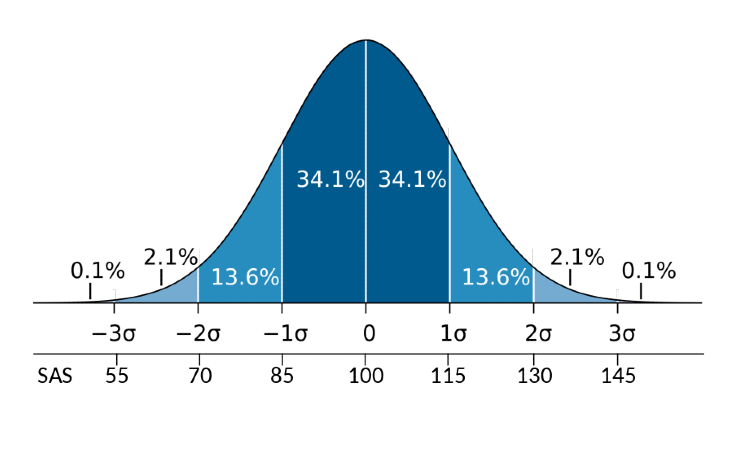
Paper on Showing Significance Proves Very Significant Decade Later
An academic paper that asserts you can present nearly any research finding as significant would be widely read and cited has received more that 4,000 citations since it was published in 2011.

Paper on Amazon’s Mechanical Turk Proves a Durable Article
A 2011 paper on Amazon’s then-new and innovative Mechanical Turk, which among other things crowdsources prospective participants for social and behavioral research via an online marketplace, has garnered 7,500 citations in the subsequent decade.

Paper on Danish National Patient Register Keeps on Giving After 10 Years
A paper looking at the Danish National Patient Register has proved one of the most cited papers published by SAGE in 2011.

Understanding the Foundations of Customer Engagement
Since it appeared in the Journal of Service Research a decade ago, the paper “Customer Engagement Behavior: Theoretical Foundations and Research Directions” has ben cited in other academic papers more than 1,300 times.

The Future of Precarious Work
In 2009, American Sociological Review published Arne L. Kalleberg’s “Precarious Work, Insecure Workers: Employment Relations in Transition,” in which he explores the various ways unpredictable work impacts employees. Over 10 years later, sociologists actively turn to and build upon his work and the suggested structural changes needed to create more stable conditions.

How One Study on Entrepreneurial Orientation Would Impact the Field
Researchers Andreas Rauch, Johan Wiklund, G.T. Lumpkin, and Michael Frese began looking at the connection between business performance and ‘entrepreneurial orientation’—the entrepreneurial governing style of a business.
What Research Made the Most Impact 10 Years Later?
This year, SAGE will analyze citation data for articles published in SAGE journals in 2009 to find out the most highly cited through the end of 2019. In May, we will present our inaugural 10-Year Impact Awards to the authors of the three papers with the most citations and share helpful insights we learned.
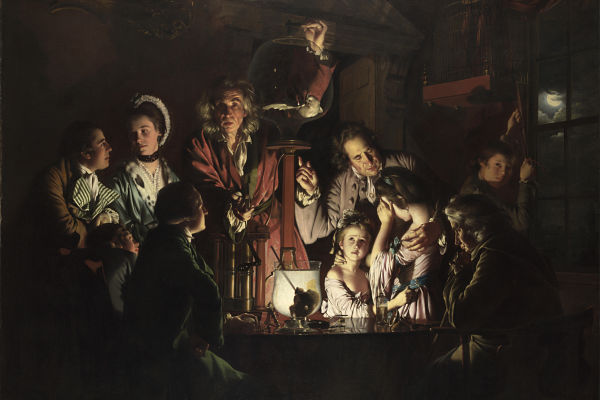

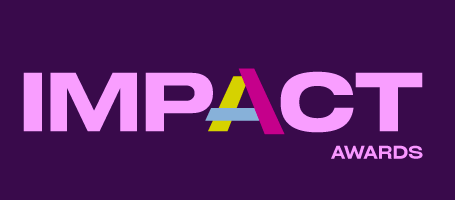
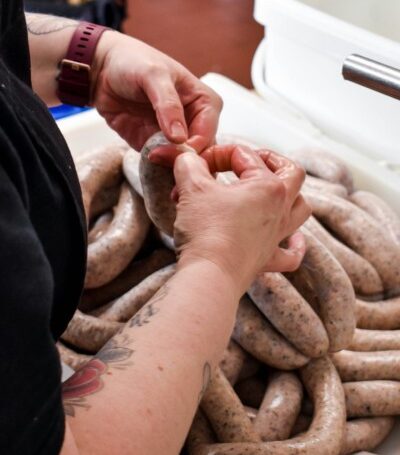
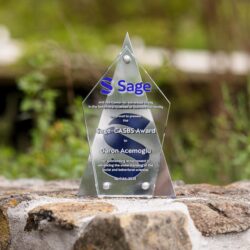
![Share Your Most Surprising Policy Citation for Chance to Win $500 [Closed] Share Your Most Surprising Policy Citation for Chance to Win $500 [Closed]](https://www.socialsciencespace.com/wp-content/themes/conferpress/images/default_thumbnail-new-border.jpg)
